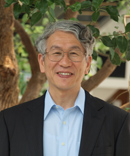| |

Atsuto Suzuki
Director General
|
2009.09.21
Multi-CPU Than One
On 3 September, I was invited to the CERN Council Working Group to show some comments on the following issues which became inputs for the future strategy of CERN. These issues comprise I) geographical enlargement, II) global projects and their governance and III) scientific enlargement. These CERN issues seem to result in long-standing discussions. You can read "Proposal for an Inter-Laboratory Task Force on Remote Operation" in CERN Courier November 1999, "Accelerators to Span the Globe" in CERN Courier May 2000 and "Strategies for Deciding Future of HEP" in report from EPP 2010. Moreover, it is noted that in October 2008, the present CERN Director General Rolf Heuer had the presentation of "Outlook: Enhancing World Collaboration" in the ICFA Seminar at SLAC. He concluded the necessity of Global Accelerator Network (GAN) which had been proposed in early 2000s. The visions of GAN are to make the best use of world-wide competence, ideas and resources, to make projects part of the national programs of the participating countries, to create a visible presence of activities in all participating countries, to make a minimum administrative structure for projects with mainly management oversight functions, to keep financial stability combined with necessary flexibility, to be an international project of limited duration, and so on. Although GAN does not envision an international permanent institution, it builds one big international institution for the limited duration. My comments on the CERN strategy are made up from somehow critical points of view against the background of the European strategy mentioned above.
In the context of the CERN issues I) geographical enlargement and II) global projects and their governance, the recent trends of high energy physics projects should be considered, where the project size is growing bigger and bigger, the project cost is rising higher and higher, and the project time span is getting longer and longer. Given such circumstances, it is inevitable to lead to the CERN strategy I) and II). However this does not come to building One Big World Laboratory. I would like to point out the risk and incompleteness for One Big World Laboratory.
The phrase of One Big World Laboratory immediately reminds me the extinction of dinosaur due to less freedom in governance. It is the common sense that the smaller the organization, the more effectively it can do business.
It should also be considered that each world laboratory has its own missions and roles. For instance, KEK is the research center for particle physics, nuclear physics and material/life sciences. KEK is the inter-university research university. In KEK, there are three faculties of graduate university for advanced studies. The KEK governance stands on such diversity of missions and roles. Turning our eyes to Asia, as well as researches using accelerators, applications of accelerator and detector technologies are of much interest. KEK has been endorsing these activities in collaborating with Asian accelerator laboratories. In order to push forward them much more and coherently, we have the plan to build up the multi-lateral collaboration body, jointing KEK, IHEP (China), TIFR/RRCAT (India), BINP (Russia) and Seoul National Univ. (Korea). The kick-off meeting will convene in Beijing this December. Such individual laboratory and regional activities are not activated under the world minimum management structure. In particular, the next aspect is unavoidable. That is different value judgments in different civilizations. This was advocated by Arnold J. Toynbee in his book, A Study of History and Samuel P. Huntington in the Clash of Civilizations and the Remaking of World Order. Both authors also argue that there is no common value judgment in the world 9 different civilizations.
What is our strategy? KEK addresses world scientific collaborations, based on "Project Interests". As for the CERN Strategy III) Scientific Enlargement, KEK puts the first priority on J-PARC experiments and the KEKB-upgrade at present. In future it might happen to participate in oversees project as the first priority, depending on the project interests. As for the strategy I) and II), we should not disregard the efforts on establishing the governance model for ILC. The ILC governance model, site selection procedure and construction schedule which are now being discussed and finalized among ILCSC WG, GDE and RD, will be the standards for future big world projects.
Finally let me summarize my opinion for the CERN Strategy I), II) and III) by one sentence. Globalization does not realize with "One CPU Processor", but "Multi-CPU Processor".
Thank you very much for your kind attention.
Atsuto Suzuki, KEK Director General
|



